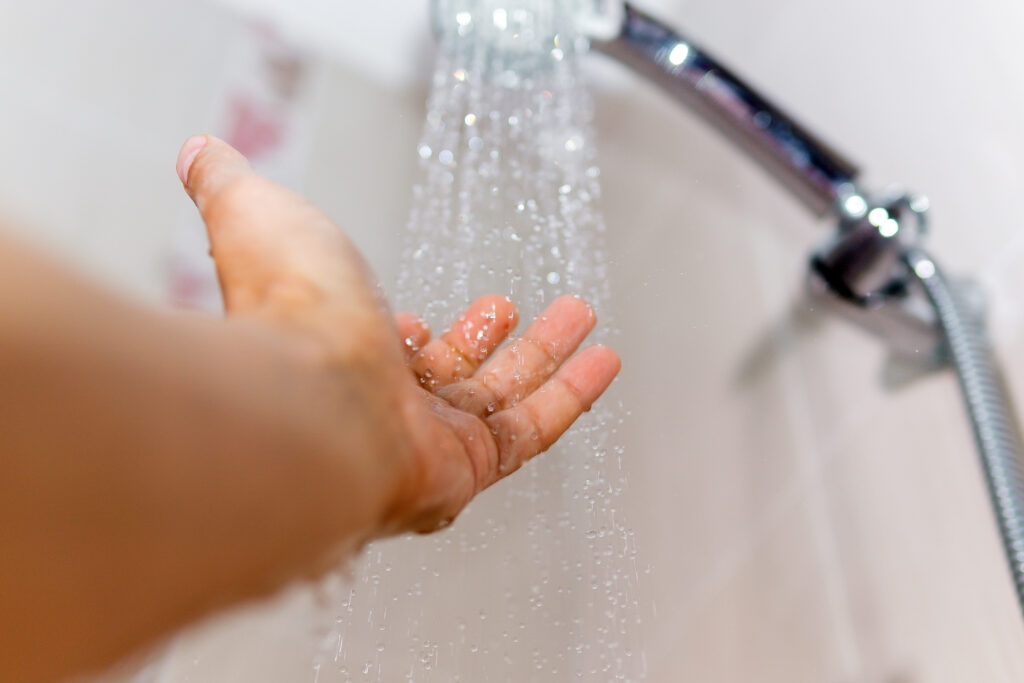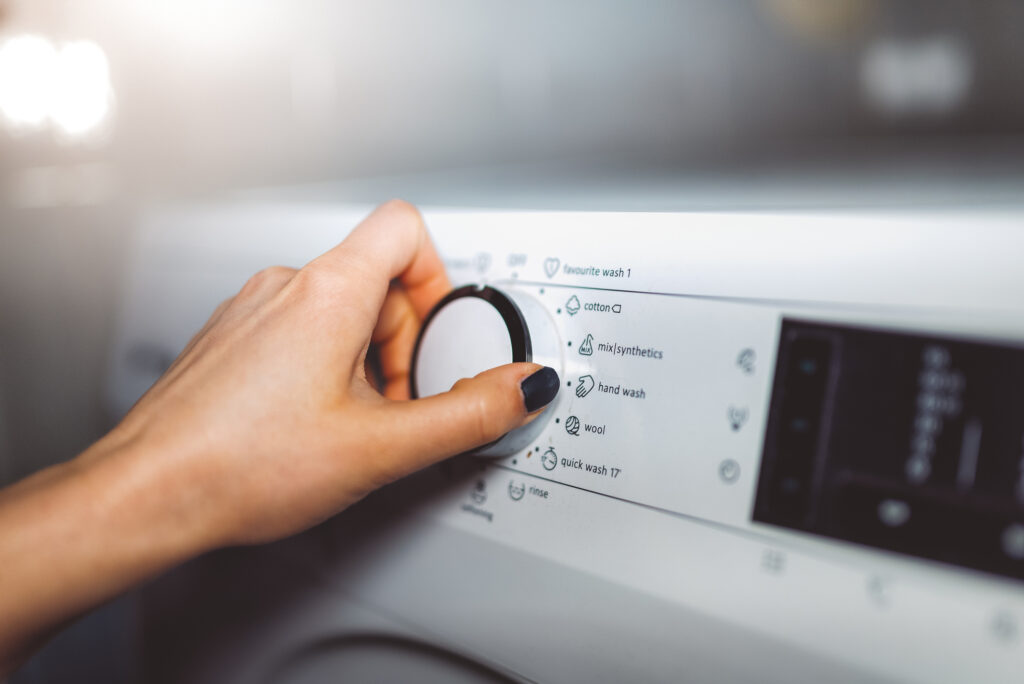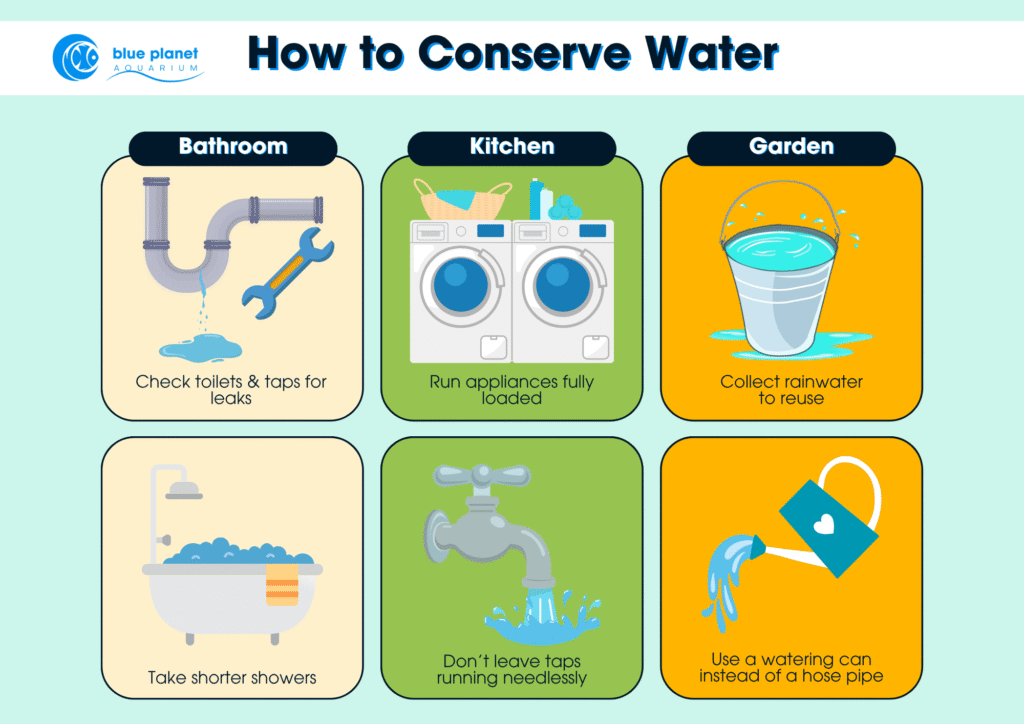Conserving water has never been so important for our planet. Cutting back on water usage not only helps protect a valuable resource, but it can also lower your utility bills.
If you’re looking for some easy ways to help shrink your water footprint throughout the year, then you’ve come to the right place. We’re sharing simple changes you can make to your daily routine that will help reduce your overall water consumption.
What is water conservation?
Water conservation is all about using the planet’s water supplies efficiently and minimising waste. We should all be aiming to reduce unnecessary water usage for future generations.
Importance of water conservation
So, why is this important? By saving water and not wasting it needlessly, we can ensure habitats and wildlife that rely on water can thrive. Whether that’s protecting the wetlands or the fish in our seas and oceans, most living creatures benefit from water conservation.
Overusing water can also increase your household energy usage, so taking steps to conserve water is a great way to reduce your carbon footprint. In turn, this lowers your environmental impact and could even help reverse the effects of climate change before it’s too late.
And with utility bills rising, it doesn’t hurt to understand how you can save some money by simply cutting back on your water usage.
How do you conserve water?
Lowering water consumption is something we can all do at home with little effort. That’s why we’re sharing our top tips for everyday changes you can make that could help conserve gallons of water over time.
Take quick showers instead of baths

A bath can take up to 70 gallons of water, whereas a five-minute shower uses anything between 10 and 25 gallons, so it’s worth thinking twice next time you contemplate a relaxing bath. Reducing showers to exactly 4 minutes could save the average British household up to £60 a year on heating bills (£65 in Northern Ireland). To help you stick to the limit, try WaterAid’s 4-minute shower playlist.
An aerated shower head, combining water and air to give you an invigorating shower, or a shower regulator could be installed so you can keep tabs on flow rates.
If you’d still prefer to take a bath, consider saving the water afterwards to water plants or a bucket flush.
Don’t leave the tap running
Most of us have heard it before: turning off the tap when brushing your teeth saves water. But few of us know just how much water this can save. Turning off the tap while brushing your teeth or washing your face could save around 20 litres of water per household each day – that’s 7,300 gallons of water each year!
But this doesn’t just apply to brushing your teeth. It should be something you think about for any task where water is running but not directly in use, including shampooing and shaving.
Reuse water where you can
Get creative with ways you can reuse water for other purposes rather than wasting it.
After cooking pasta, parboiling potatoes, or steaming vegetables, instead of dumping that water down the drain, save it – drain it into a large pot, allow it to cool, and reuse it for bucket-flushing, watering your plants, mopping or washing the car. Just make sure you wait for it to cool because your plants will not thank you if you chuck boiling water on them! Boiled water from vegetables or cooking pasta could be used to make gravy or sauces, adding flavour and saving water all at the same time.
Use a dehumidifier? The excess water can be reused on the plants. Even cooled washing-up water can be used to hydrate outdoor plants since the liquid helps thin down the water to penetrate the soil.
Only boil what you need
Making a round of tea and coffee? Try to only fill the kettle with exactly the right amount of water. This saves energy and water, since you won’t be heating excess water for longer than needed.
Unless you’re switching drinks, you can also use the same cup or mug all day to help save around 15 litres of water each day.

Make the most of your dishwasher and washing machine
Always wait until your appliances are fully loaded before running them. Washing machines save 20 litres if on a full load, while dishwashers can save up to 65 litres.
Contrary to misconceptions, dishwashers use less water than washing dishes by hand. In fact, dishwashers are, on average, four times more water efficient than washing by hand per place setting. Just be sure that your dishwasher is loaded correctly so none of your crockery or cutlery needs to go in for a second wash.
Be sure to read your manual and see if your dishwasher requires pre-rinsing – a good scrape should suffice for most modern machines. Most modern machines can handle dirty plates and cutlery without pre-rinsing, though.
Fix leaks promptly
This is an obvious but very important one: a running toilet can waste up to 200 gallons of water each day. At one drip per second, a dripping tap can waste 15 litres of water a day, or 3,000 gallons in a year. If your home is suffering from any of these defects, it’s time you called the plumber for a quick repair, which can prevent long-term waste and keep your water bill low.
Install water-saving devices
One way that businesses are encouraging water conservation is with easy-to-install water-saving devices. Here are just a few devices worth investing in:
- Water butts and rainwater diverters: Collects rainwater for gardening
- Eco shower heads: Reduce water use without affecting water pressure
- Hot water dispensers: Instant hot water reduces waste from running taps and waiting for water to heat up
Water your garden the smart way
Using a garden hose might seem like the easiest way to water plants and grass in the garden, but it’s less wasteful to use a watering can. This helps control the amount of water used, saving up to 80 litres at a time.
During summertime, especially, it’s also recommended to water plants and grass either early morning or late evening to reduce water evaporation in cooler temperatures.
Simple ways to save water at home
We’ve put together a poster with some simple reminders about how to save water in different parts of your home, from the kitchen to the bathroom and even the garden.

Water is one of the most important resources for preserving life, so we hope you’ll join us in our quest to conserve water and reduce our collective water footprint. Find out more about our conservation efforts at Blue Planet Aquarium, or better yet, come along and visit us!
